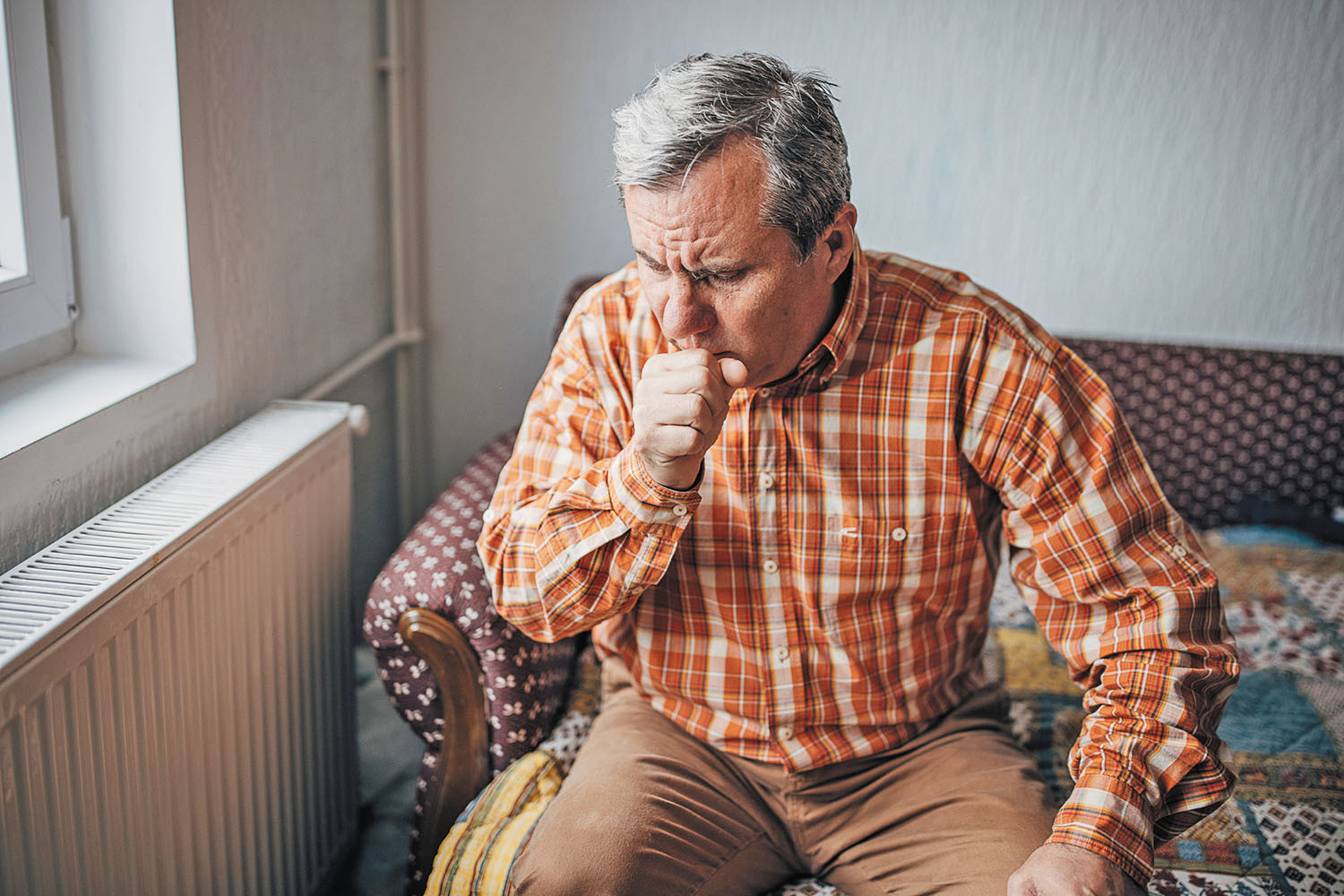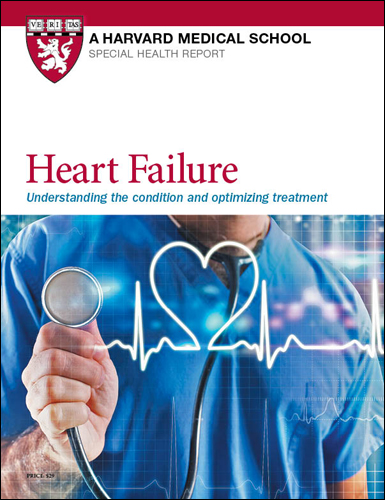A breath-robbing disease that's hard on the heart
About one in eight adults over age 45 has COPD. But many people don't know much about it.
- Reviewed by Deepak L. Bhatt, M.D., M.P.H, Former Editor in Chief, Harvard Heart Letter

A nagging cough and a feeling of breathlessness are hallmarks of chronic obstructive pulmonary disease (COPD), a group of lung-damaging conditions that slowly worsen over time. The two main and often overlapping conditions involve injury to the air sacs of the lungs (emphysema) and inflammation in the lung's airways (bronchitis).
About 16 million Americans are currently living with COPD. But the disease is underrecognized and undertreated, and experts believe millions more may not realize they have it. In general, people are far more familiar with heart disease than COPD. So if they start feeling short of breath, they may attribute it to heart disease, or to simply growing older.
"The two diseases often occur together, so during a short medical appointment, sometimes it's hard to know whether the main underlying problem is with the heart or the lungs," says Dr. Brittany Rosales, a pulmonologist at Harvard-affiliated Beth Israel Deaconess Medical Center. What's more, the symptoms of COPD (see box) tend to come on gradually, so they become a normal part of a person's daily life. People might not tell their doctor about a symptom until it becomes debilitating, says Dr. Rosales.
Symptoms of COPD
|
Shared risks
Cigarette smoking, which sparks the cell-damaging process of inflammation, contributes to heart and lung problems, but especially COPD. Smoking (both past and present) accounts for at least 80% of COPD cases. But the other 20% of people with COPD are nonsmokers, including people who have regularly been exposed to secondhand smoke rather than smoking themselves.
Diagnosing COPD
Anyone with symptoms of COPD should be evaluated by a physician. If you have heart disease and are a current or former smoker (even if you quit decades ago) or have ever lived with a smoker, ask your doctor about a spirometry test. Used to diagnose COPD, this test uses a device that measures how much air you can hold in your lungs and how easily you can inhale and exhale. It's quick, inexpensive, and painless.
Managing COPD
Recognizing even a mild case of COPD is important so you can start treatment, which typically includes inhaled drugs called bronchodilators that relax the muscles around the airways. COPD symptoms can worsen suddenly, an event known as a flare-up or exacerbation. According to a study published Sept. 20, 2022, in the Journal of the American Heart Association, cardiovascular issues were more common in the month after a COPD flare-up. The heart problems included new or worsening heart rhythm disorders, heart failure, high blood pressure, and others.
These risks aren't surprising, given that COPD flare-ups can increase inflammation, an outpouring of white blood cells and other substances that are a known trigger for heart-related complications. In addition, oxygen levels drop when COPD symptoms worsen, which puts additional strain on the heart. Another possible contributor may be certain drugs used to treat flare-ups, such as beta agonists, which relax the muscles of the airway walls but boost the heart rate. But there is conflicting information about whether these medications may help or harm the heart, says Dr. Rosales.
Preventing flare-ups
Dr. Rosales urges her patients with COPD to follow these tips to help prevent flare-ups:
- Stay away from people with cold and flu symptoms.
- Wash your hands frequently, and carry hand sanitizer for times when you can't wash your hands.
- Stay up to date on recommended vaccines, especially those against the flu, COVID-19, and pneumonia.
- Avoid very cold air or extreme heat and humidity.
- Keep your home free of air pollutants, such as fireplace smoke and dust.
People with COPD who have frequent, bothersome symptoms should speak to their doctor about strategies to feel better, says Dr. Rosales. That might include medications or pulmonary rehabilitation programs, which feature supervised exercise and education to help people manage their breathlessness, build stamina, and do everyday activities more easily.
Image: © South_agency/Getty Images
About the Author

Julie Corliss, Executive Editor, Harvard Heart Letter
About the Reviewer

Deepak L. Bhatt, M.D., M.P.H, Former Editor in Chief, Harvard Heart Letter
Disclaimer:
As a service to our readers, Harvard Health Publishing provides access to our library of archived content. Please note the date of last review or update on all articles.
No content on this site, regardless of date, should ever be used as a substitute for direct medical advice from your doctor or other qualified clinician.
















